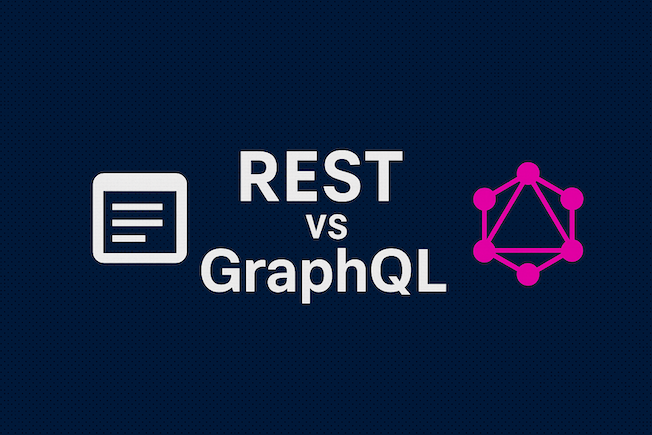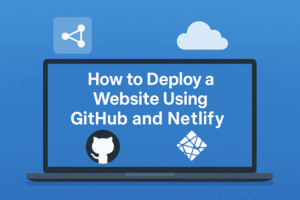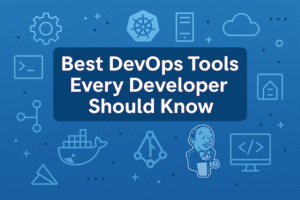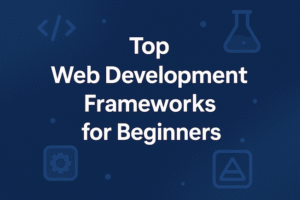Introduction: The API Debate
APIs (Application Programming Interfaces) are the backbone of modern software development. They allow applications to communicate and exchange data efficiently, and different API architectures — like REST vs GraphQL — define how that communication happens.
Among today’s most popular approaches, REST and GraphQL stand out as two powerful but distinct ways of structuring APIs. In this article, we’ll explore REST vs GraphQL in depth: what they are, how they differ, and when to use each one. By the end, you’ll have a clear understanding of which approach best fits your project’s needs.
What Is REST?
REST is an architectural style for building APIs that use HTTP requests to access and manipulate data, as explained by Mozilla Developer Network. Each endpoint represents a specific resource — such as /users or /products — and common HTTP methods like GET, POST, PUT, and DELETE are used for operations.
Example:
GET /users/1
This request retrieves data for a single user with the ID 1.
Advantages of REST:
- Simplicity — Easy to understand and widely supported.
- Caching — Works seamlessly with HTTP caching mechanisms.
- Scalability — Well-suited for large systems and distributed architectures.
Limitations of REST:
- Overfetching — Clients may receive more data than needed.
- Underfetching — Sometimes multiple requests are required to get all necessary data.
- Fixed endpoints — The data structure is predefined and less flexible.
What Is GraphQL?
GraphQL, developed by Facebook in 2015, is a query language for APIs that allows clients to request exactly the data they need — no more, no less.
Instead of multiple endpoints, GraphQL uses a single endpoint (e.g. /graphql) where clients send structured queries describing the desired data.
Example Query:
{
user(id: 1) {
name
email
posts {
title
comments {
content
}
}
}
}
This single query fetches a user’s details, their posts, and all comments — something that might require multiple REST calls.
Advantages of GraphQL:
- Fetch exactly what you need — Reduces overfetching.
- Fewer network requests — One query can retrieve related data.
- Strongly typed schema — Clear structure and automatic documentation.
Limitations of GraphQL:
- Caching is complex — Standard HTTP caching doesn’t apply easily.
- Server complexity — Requires resolvers and schema management.
- Overhead for simple APIs — Might be overkill for small systems.
REST vs GraphQL: Key Differences
| Feature | REST | GraphQL |
|---|---|---|
| Data Fetching | Fixed endpoints | Flexible queries |
| Overfetching | Common | None |
| Underfetching | Common | Rare |
| HTTP Methods | GET, POST, PUT, DELETE | Single POST endpoint |
| Performance | Can require multiple requests | Often fewer requests |
| Learning Curve | Easier for beginners | Steeper, but powerful |
| Caching | Built-in via HTTP | Requires custom approach |
| Tooling & Ecosystem | Mature and stable | Rapidly evolving |
When to Use REST
Choose REST if:
- Your API is public or widely used by third-party developers.
- You need simple, cacheable, and predictable endpoints.
- Your data relationships are not deeply nested.
- You want a proven, easy-to-scale solution.
Ideal for:
- CRUD-based APIs
- Microservices
- Web apps with straightforward data models
When to Use GraphQL
Choose GraphQL if:
- Your frontend needs complex, nested data from multiple sources.
- You want better performance with fewer network requests.
- You’re building mobile apps or SPAs (Single Page Applications).
- You prefer strong typing and auto-generated documentation.
Ideal for:
- Modern web & mobile apps
- Dashboards and analytics tools
- Applications that evolve rapidly
Can You Use Both?
Absolutely. Many teams use REST for public APIs and GraphQL for internal data orchestration.
For example, your backend could use REST between services but expose a GraphQL layer for the frontend. This hybrid approach combines REST’s stability with GraphQL’s flexibility.
Conclusion
REST and GraphQL are both powerful ways to build APIs — but they serve different needs.
If your application relies on simple, stable endpoints, REST remains a reliable standard.
If you need dynamic queries and want to optimize data fetching, GraphQL is the future.
Ultimately, the best choice depends on your project’s scale, data complexity, and development team’s experience.







